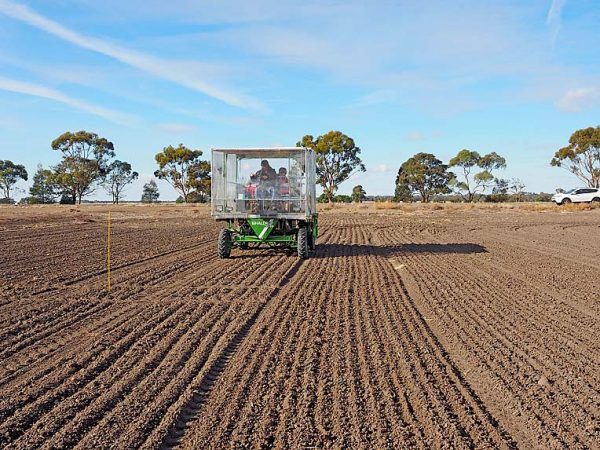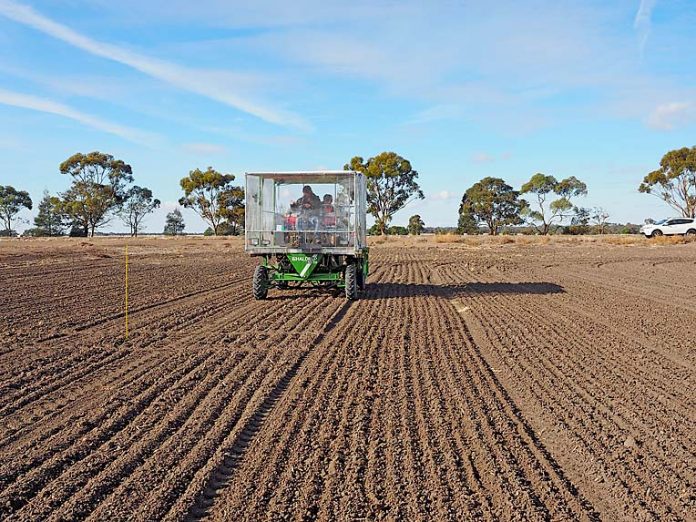
DISEASE ratings from more than 55,000 commonly grown, not-yet-released and experimental cereal lines will be the result of research being carried out at Horsham this year.
Agriculture Victoria senior plant pathologist Dr Grant Hollaway said Agriculture Victoria’s cereal disease nursery at Horsham was growing a reputation for producing rigorous disease data in a timely manner.
“Thanks to a purpose-built precision plot seeder capable of planting more varieties across fewer hectares, Agriculture Victoria is well positioned to rapidly screen wheat and barley lines and to identify any new pathotypes that may emerge,” he said.
“The seeder plants at a rate of 3000 individual rows per hour, which helps us run a very efficient program.”
Dr Hollaway said this year his team would screen around 55,000 wheat and barley lines for 10 different foliar diseases, including cultivars in this year’s national variety trials.
“Our precision plot seeder allows us to plant different varieties in each row within a plot, compared with traditional field trial methodology which involves larger plots being sown to a single variety,” he said.
“This not only allows us to sow more lines over fewer hectares, but we can include experimental lines in our screening nursery when only a small amount of seed is available.”
Wheat plants at the Agriculture Victoria Plant Breeding Centre disease nursery are screened for their ability to withstand leaf rust, stripe rust, stem rust and yellow leaf spot, while barley is screened for spot form of net blotch, net form of net blotch, leaf rust and scald.
A disease nursery at Agriculture Victoria’s higher-rainfall Hamilton site screens against septoria in wheat.
Disease is introduced to the plants through a range of means, including artificial inoculation, spreading of infected stubble across the plots or natural infection.
In its entirety, the disease nursery covers six hectares, which are flood irrigated to maximise optimum conditions for disease to flourish.
The development of the disease nursery at Horsham has been a successful Agriculture Victoria initiative with a number of private breeding companies using the facility.
Dr Hollaway said so far this year’s sowing program had progressed smoothly.
“We will not finish until around the first week of August as we deliberately spread our sowing time to favour the different diseases we work with,” he said.
“For example, stem rust prefers warmer temperatures so these plots are planted last.”
During the growing season, each variety will be examined and scored at least once for signs of disease.
“The aim is to ensure we can provide growers with the most up-to-date disease ratings that will assist them when making decisions about which varieties to grow,” Dr Hollaway said.








